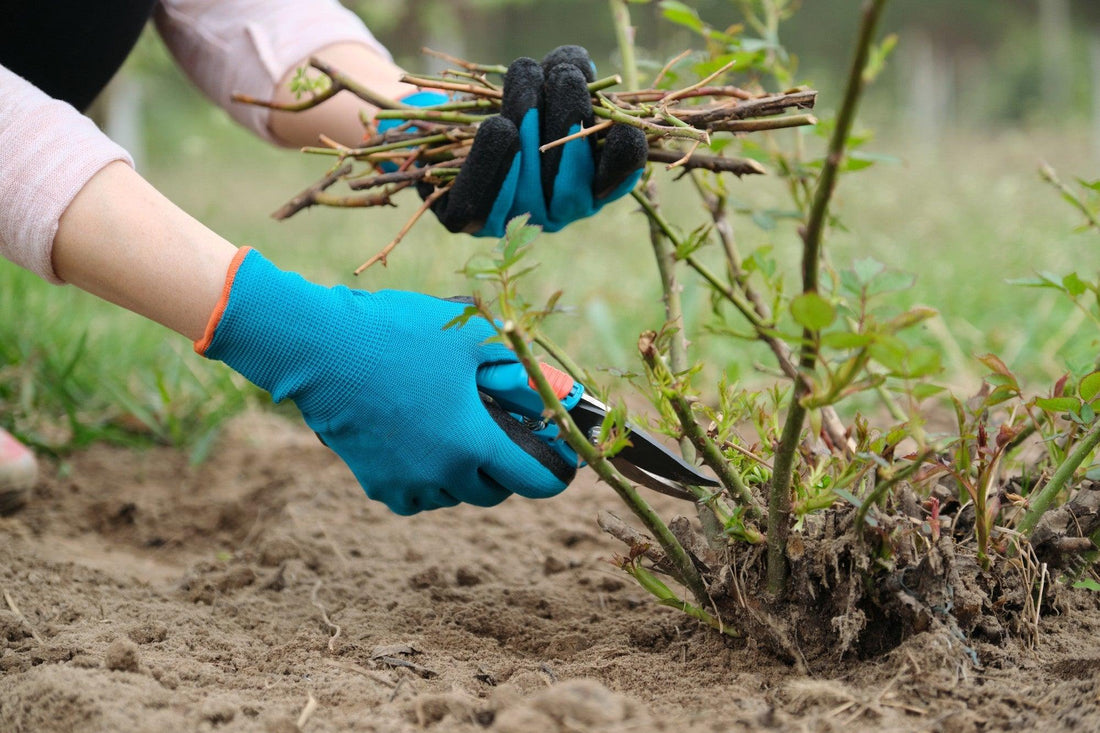
How to prune your bush roses
Share
Roses are some of the most special plants for any garden but too often people are worried about one of the key tasks of the year ... Pruning.
This short guide aims to run through through the basics of pruning roses to try and make it a far less daunting task and really help your roses put on a fantastic display year after year. The key take away is that pruning isn't an exact science, and just pruning your rose whether following this guide exactly or just giving the plant a general cut back (even with a hedge trimmer) and clean out of dead material will mean you will get a much better display of flower.
When should I be pruning roses?
The best time of year to prune roses is often later than many people expect. In the UK a window between Mid February and Mid March often is the best time to prune your roses. Much earlier and you run the risk of a severe cold blast in early spring potentially scorching the new growth and leaving much later in the year can mean your roses start flowering in the summer meaning you could potentially miss out on some flowers in the year.
What roses need pruning?
The key roses that need pruning are the bush roses, primarily Hybrid Tea, Floribunda, Patio and Ground cover varieties. These all need taking back to around 6" in height to get the best flowers from them. Out guides on Climbing roses and Shrub roses will cover how to prune these types of roses in greater detail as while important, isn't as vital as the main Bush rose types.
Why do roses need pruning?
Roses need pruning primarily because they flower best on new growth. At the start of each season, roses will put on growth from the top 3 buds of each stem. If roses aren't pruned, the left over growth from last year will mean there are a multitude of stems where the rose will try to grow from. This causes a number of issues. Firstly by producing so many buds on the top of the plant, the limited winter reserves held in the roots for spring growth are spread over far more buds meaning each bud is weaker. Second, the buds that are formed tend to be on the thinner, weaker plant material. Third by throwing a bud at the top of each of last year's growth, you will end up with significant amount of growth at the top of the plant which can cause disease build up in the summer due to lack of air movement in the middle of the summer.
What should I be doing?
The aim of pruning is to end up with 3 - 6 good stems with growth on the plant by the end, each around 6-8 inches off the ground which will leave around 4 - 5 buds ready for growth.
To start off with make sure you have a good sharp pair of secateurs to use along with a pair of garden gloves to carry away the material you cut off.
To start with, reduce the growth on the plant by around 1/2 to allow you to better inspect the lower growth on the plant. In the past we've even done this with a hedgetrimmer on the nursery with some of our larger beds.
Next get down low to the base of the rose so you can better inspect what is good growth and what is weak, old or dead wood. Start clearing out all the very weak growth with your secateurs making sure any dead or very old wood is also removed.
Finally you should now be left with around 2 - 6 strong stems from the base which are reasonably tall. These stems should be taken back as low as possible to the union of the rose leaving around 6 inches of good strong growth ready for next season. The image below hopefully displays what you're aiming for with a before and after diagram.

